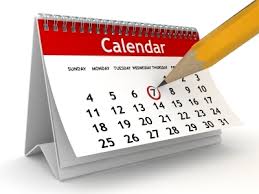Forget about winter for a while and start planning for spring. Here are some timely plant and garden related tips from the University of Tennessee Institute of Agriculture:
Planning
- December is a good month to start thinking about landscape improvements for next season. Look through books and online for ideas. If your plans are elaborate, make an appointment with a landscape professional. Many landscape designers and landscape architects are less rushed this time of year.
- Gardening catalogs should start arriving this month. Start a list of items that you want to purchase for next spring. This is also a good time to review pictures you have taken of your gardens during the past growing season. You can see what you might need to add to your gardens and yard.
Shrubs and Trees
- As long as the ground is not frozen, you can plant trees and shrubs in your landscape. Be sure to mulch transplants and keep them well watered.
- Prune trees and shrubs that are dormant or rejuvenate overgrown shrubs by severely cutting them back. Keep in mind that if you prune spring flowering shrubs, like azaleas and forsythia, you are pruning off their spring flowers.
- Prune evergreen branches to use in holiday decorating.
Perennials, Annuals & Bulbs
- Remove heavy layers of stray leaves that may have accumulated around perennials. They can mat down and smother perennials, and they promote rotting.
- Empty the soil from your container gardens. Add the soil to your garden beds or to the compost pile. Clean, sterilize, and store the pots. They will be ready for planting next year.
- Check out the sale racks at your local garden center for bulbs that have been reduced in price. If they feel firm and are not moldy, they should still be good. Plant them as soon as possible. There is still time for them to get the winter chilling they need.
Fruits & Veggies
- Weather permitting, spray fruit trees with lime sulphur and dormant oil to rid trees of overwintering insect eggs and fungus. Thorough coverage is important. Do not spray when temperatures are below freezing.
Indoor Gardening
- Check houseplants frequently to see if they need water. Dry heated air can cause them to lose moisture more rapidly than they do in the spring and summer when indoor air is more humid. However, if you keep your home on the cool side, houseplants may need less frequent watering in the winter months.
- Reduce or eliminate houseplant fertilizing during short winter days unless your plants continue to grow actively. Most plants grow more slowly now because there are so few hours of bright light each day.
- Wash your plants with lukewarm water with a few drops of mild dishwashing liquid added. Dust and grime not only look bad on the leaves, they filter what limited light we have this time of year. They also invite insect pests.
- Inspect houseplant leaves, especially the undersides , for the fine webbing and pinprick yellow discoloration. These are signs of spider mite infestation. Spider mites are common pests that thrive in warm, dry, indoor conditions. They are very difficult to see without magnification.
Odds & Ends
- Continue to keep bird feeders full. Word will get around, and many visitors will come to call during the winter months if you provide a steady supply of suet and seed!
- From an environmental standpoint, spreading sawdust, sand, or cat litter is the best way to deal with icy sidewalks, steps and driveways.
- Drain your hoses and put them away so they don’t freeze and burst.
- Sharpen, clean and oil your garden tools for winter storage. Place some sand and oil in a large bucket, then slide your garden tools in and out of the sand. This will do an excellent job of cleaning them, as well as applying a light coat of oil that will prevent rusting.


